After reading, you will learn what is an IoT antenna, what are the IoT antenna types.
What is an IoT antenna?
The Internet of Things/IoT antenna is used in communication media that is connected to each other, IoT antenna is one of the two core components of the Internet of Things communications.
The first one is the wireless module, the second one is the IoT antenna, the two components directly determine the quality of the communication network, such as the distance from the communication, the net network is fast, the network is stable, and the network is stable.
Internet of Things (IoT) devices need to have an antenna. The smaller the IoT device space, the more the frequency band and the more complex the IoT antenna design. Internet of Things/IoT antenna includes NB-IoT antenna, 4G antenna, 5G antenna, GSM antenna, Lora antenna, GPRS antenna, UMTS antenna, Lora antenna, ISM antenna, GNSS antenna, WiFi antenna, GPS antenna, etc.
What are the IoT antenna types?
According to the use of functions, it mainly has the below 5 IoT antenna types.
Radio Frequency Identification (RFID) antenna of IoT antenna types
RFID is the most important thing for the Internet of Things. One of the most commonly used IoT communication technologies.
The high-performance RFID antenna is one of the most common IoT antenna types, the RFID antenna application coverage is also the most widely used to solve the perception, reading, and identification problem of various objectives and status of the Internet of wireless sensing environment.
Wearable antenna and implantable antenna of IoT antenna types
Body domain network (BAN) based on wearable and implantable communication is one of the important tip forms of the Internet of Things, which utilizes wearable antenna or implanted antennas, pick and transmit a variety of Signature information, solve the reliable communication problem between people to machine, people to people.
The wearable antenna and implantable are used in military communications, security rescue, health care, medical diagnosis, and treatment applications, etc.
The multi-physical quantity sensor antenna of IoT antenna types
Integrating various advanced functional materials on the antenna, the sensor antenna can map different physical quantities into an antenna electrical parameter, so that the antenna has a variety of physical quantities such as humidity, temperature, gas/liquid concentration, and force.
The Multi-physical quantity sensor antennas can solve the effective picking, accurate perception, and sensing measurement of the ultimate, non-electrical information of the tip of the Internet of Things.
Energy harvesting antenna of IoT antenna types
Energy harvesting antenna can be used as an important type of rectifier antenna, which can enrich the various radio energy in the free environment, convert it into direct current energy, replenish the sensor node in the case of energy, to solve the terminal self-powered problem and extension of the IoT Nodes.
On-chip package antenna of IoT antenna types
Large size IoT device with an external antenna of IoT antenna types
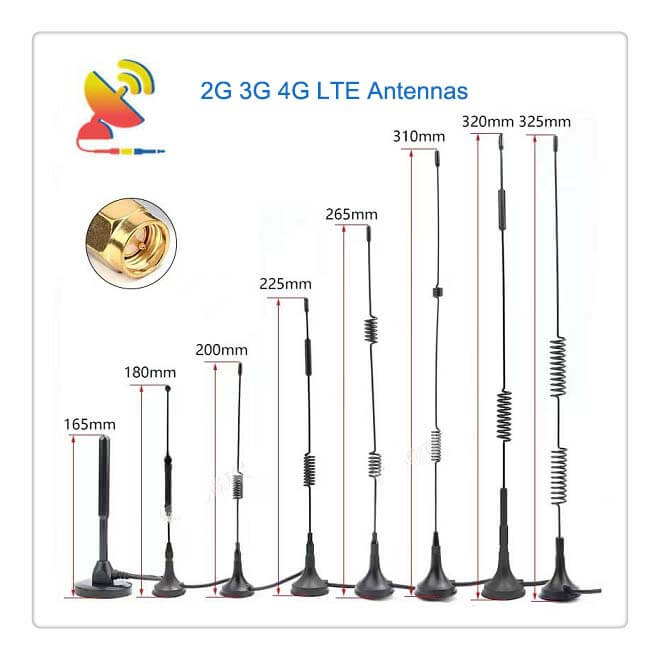
External antennas are generally standard frequency bands, no debugging, plug-in then work.
For example, a courier cabinet, or vending machine, generally use magnetic mount antennas, absorbing it on the iron shell.
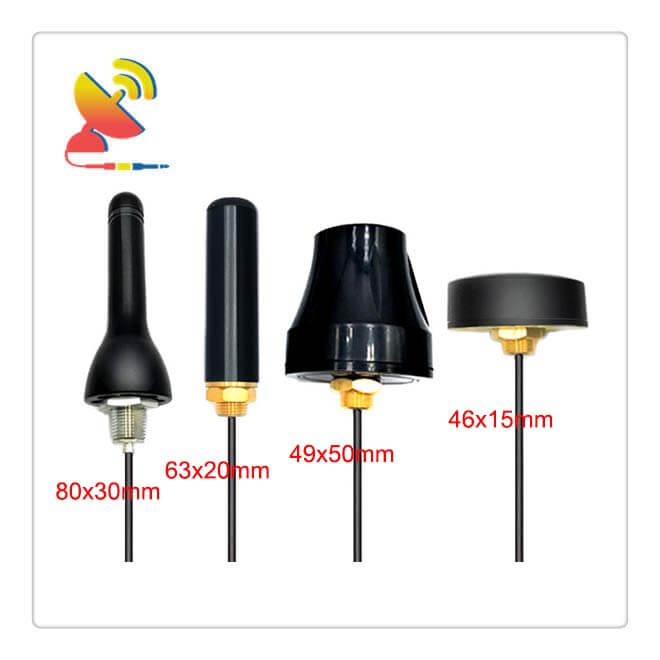
These antennas cannot be placed inside the iron cabinet housing unless the metal will block the antenna signal.
For the DTU machine or big robot, the through-hole mount antenna, or the fiberglass antenna is very suitable due to their 360-degree omnidirectional signal transmitting and receiving, IP67-rated waterproof antenna radome, durable, robust, full-day work features.
The benefits of the external IoT antenna types are convenient to use, and cheap, and the disadvantages cannot be used on small-size products.
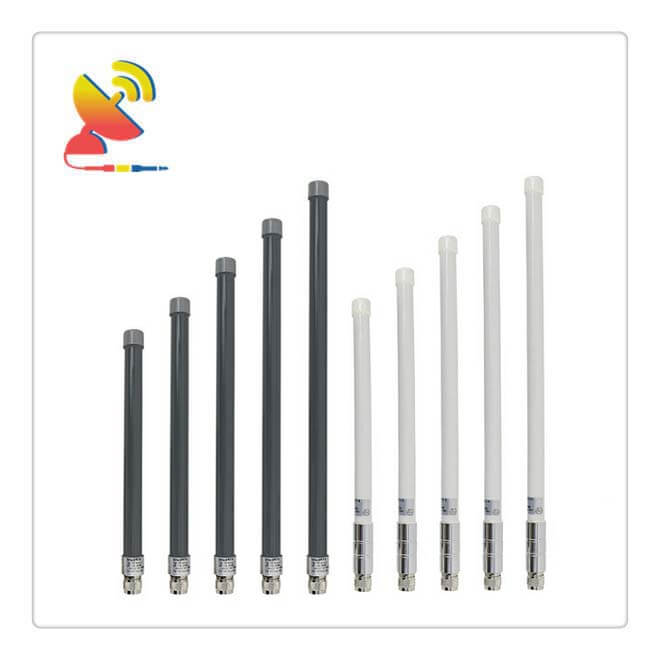
Low-frequency communication external antenna of IoT antenna types
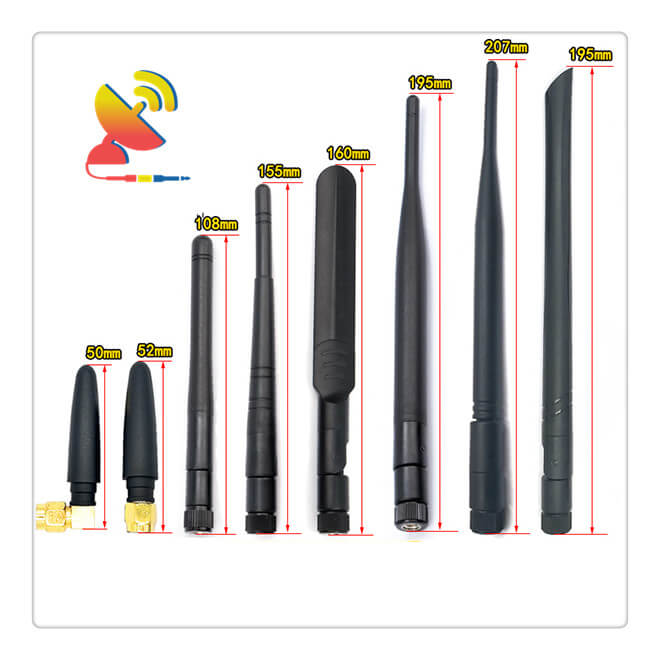
The length of the antenna is about 1/4 of the electromagnetic wave wavelength, so the lower the signal frequency, the longer the length of the antenna.
Therefore, the FM radio of around 100 MHz requires a long rubber rod antenna, and the walkie-talkie around 400MHz also needs to use an external long rubber rod antenna. 433MHz wireless serial ports commonly used in the Internet of Things, usually also used as an external antenna.
The antenna is shorter, such as 1/8 wavelength or 1/16 wavelength, it can be used, just the efficiency will fall. Some devices use a short antenna + LNA, and can also reach the reception effect of the long-day line.
However, the short antenna should reach the emission effect of the long-day line, so it is necessary to increase the transmit power, so the walkie-talkie needs to transmit the signal, which is a long external antenna, and the FM radio only does not send, there is a built-in receiving antenna.
These IoT antenna types include handheld walkie-talkie antennas, rubber duck antennas, etc.
High-frequency signal embedded antenna of IoT antenna types
For example, 2G (900 MHz), 4G (700-2600 MHz), WiFi and Bluetooth (2.4 GHz), and GPS (1.575GHz), these commonly used Internet communication methods that can be embedded antennas.
For small-sized IoT devices wireless products such as handsets, wear designs, and smart homes, rarely use an external antenna, and a built-in antenna is generally employed.
High integration, more beautiful appearance, and performance are slightly weaker than an external antenna.
The mobile phone antenna is the mainstream embedded antenna, the types and characteristics of the mobile phone antenna are as follows.
The embedded antennas mainly have ceramic antennas, PCB antennas, and flexible PCB antennas.
Ceramic antenna of IoT antenna types
Ceramic antennas are the most used in IoT devices which include the ceramic GPS antenna and Bluetooth Chip antenna.
The advantage is that the occupied space is small and the performance is better.
The disadvantage is that it is difficult to do multi-band, so it is difficult to apply in a 4G product. The requirements for board clearance requirements are relatively high, and it is not suitable for special compact products.
The ceramic antenna includes GPS, Bluetooth, and GSM antenna.
PCB antenna/Flexible PCB antenna of IoT antenna types
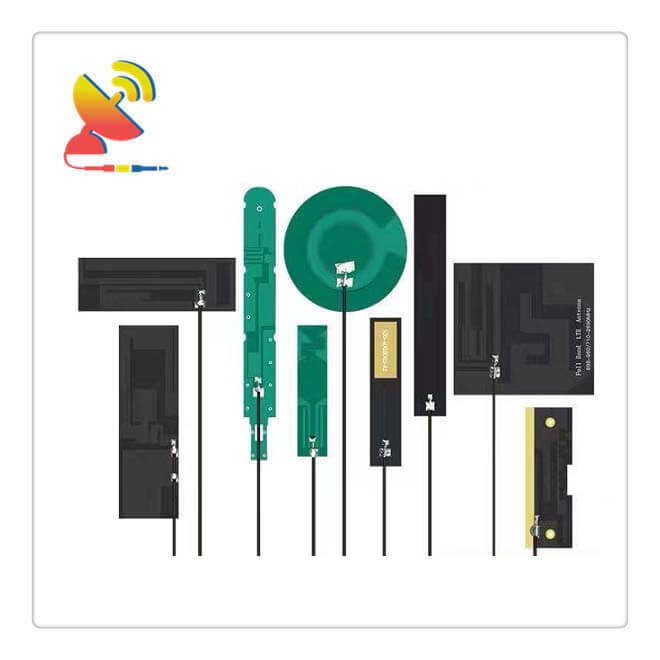
The antenna is a wire of a specific length. This line can also draw on the PCB board, which is the PCB antenna.
The PCB antenna is applied to a module board for a single frequency band such as a Bluetooth module, WiFi module, ZigBee module, GPS module, Lora module, NB-IoT module, etc.
Advantages: Almost no cost, no need to debug again at a time.
Disadvantages: Only suitable for a single band, such as Bluetooth, WiFi. Different batches of PCB antenna performance will have a certain deviation.
Spring antenna of IoT antenna types
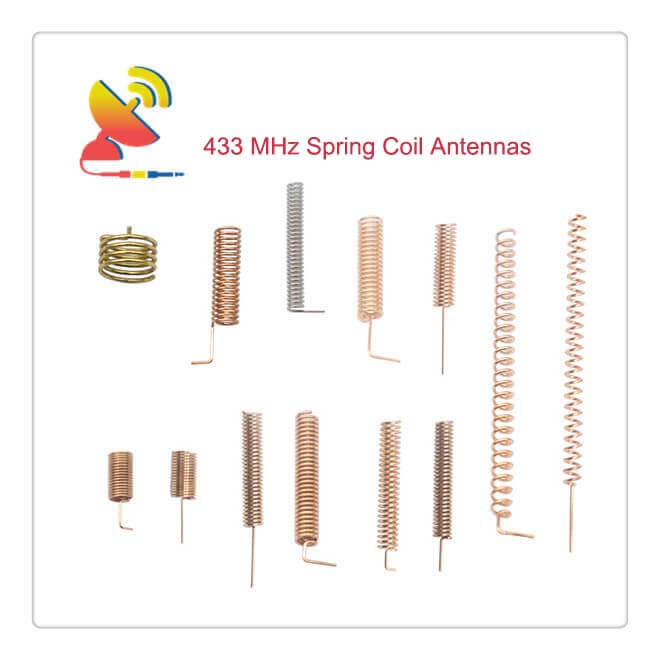
The spring antenna is a very common low-cost antenna, which is widely used in many electronic products. Whether it is 433 MHz, 868 MHz, or 915 MHz, Lora, SUB-1G, NB-IoT, GSM, or LTE, etc. Spring antennas have been widely used.
Advantages: Almost no cost, no need to debug again at a time.
Disadvantages: Only suitable for a single band, such as Bluetooth, or WiFi. Spring antenna performance in different batches will have a certain deviation.
Select the appropriate IoT antenna according to the frequency band requirements, appearance requirements, cost requirements of the Internet of Things, and intelligent products, to make product design and usage easier.
Select the appropriate IoT antenna according to the frequency band requirements, appearance requirements, cost requirements of the Internet of Things, and intelligent products, to make product design and usage easier.
C&T RF Antennas Inc is a professional IoT antenna supplier, the IoT antenna frequencies cover 2G / GSM / 4G / NB-IoT / 3G / LTE / UMTS / 5GNR Network, through technical accumulation, supply chain integration, service system construction, is dedicated to pushing the popularization of networked applications. Contact us for more details on IoT antenna design and production.
Besides the What Are The IoT Antenna Types article, you may also be interested in the below articles.
What is the difference between WIFI and WLAN?
Summary of 41 Basic Knowledge of LTE
What Are The Advantages And Characteristics Of NB-IoT And LoRa?
